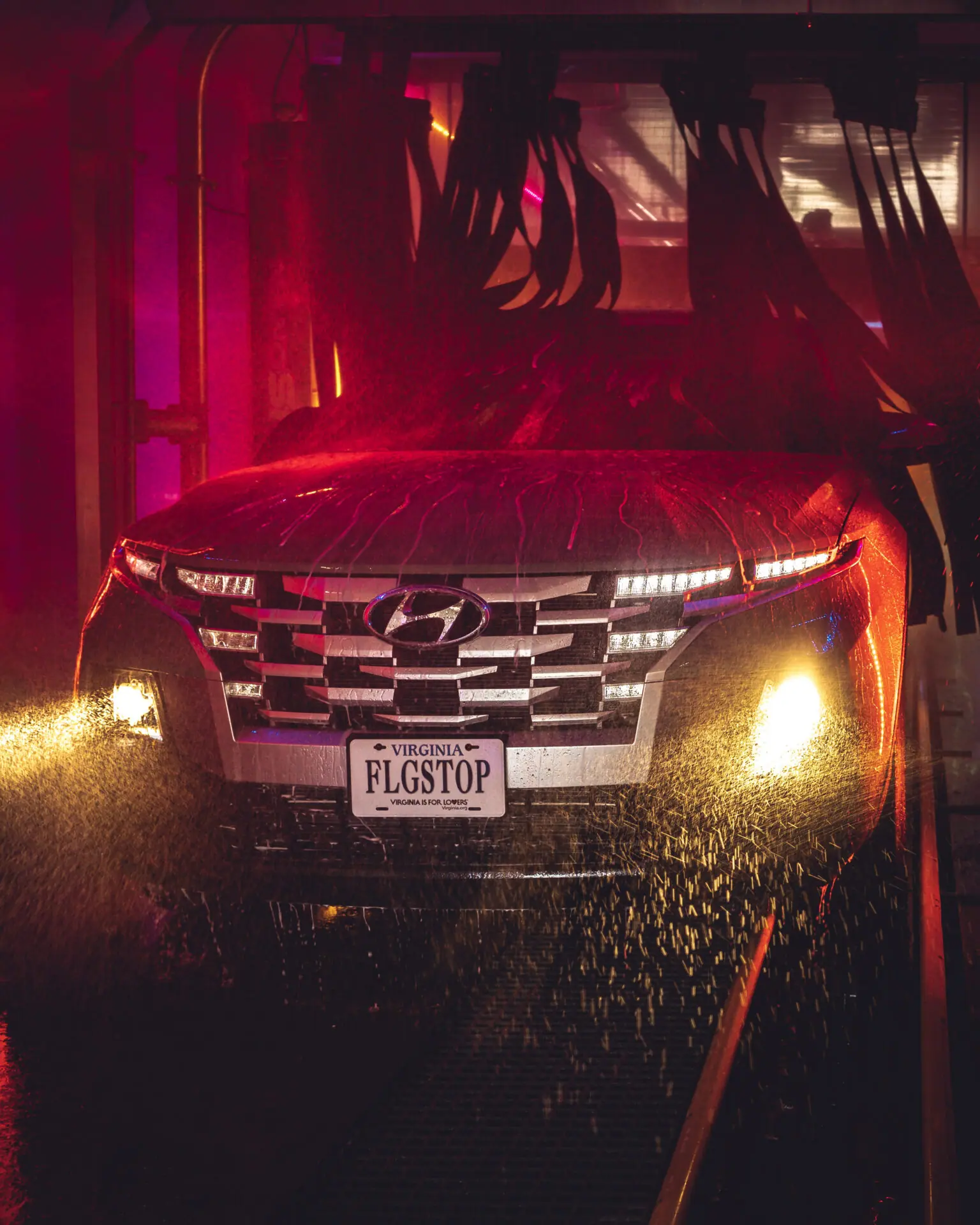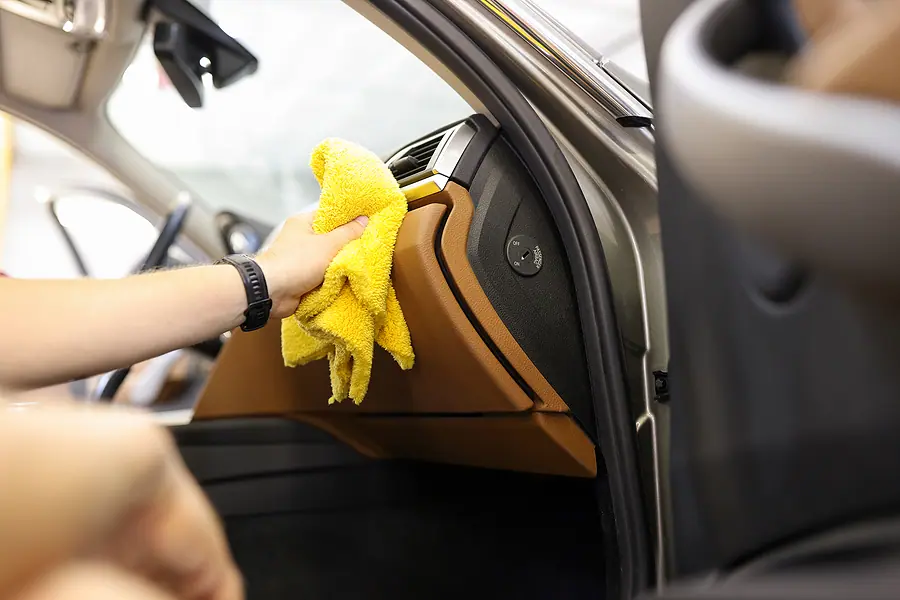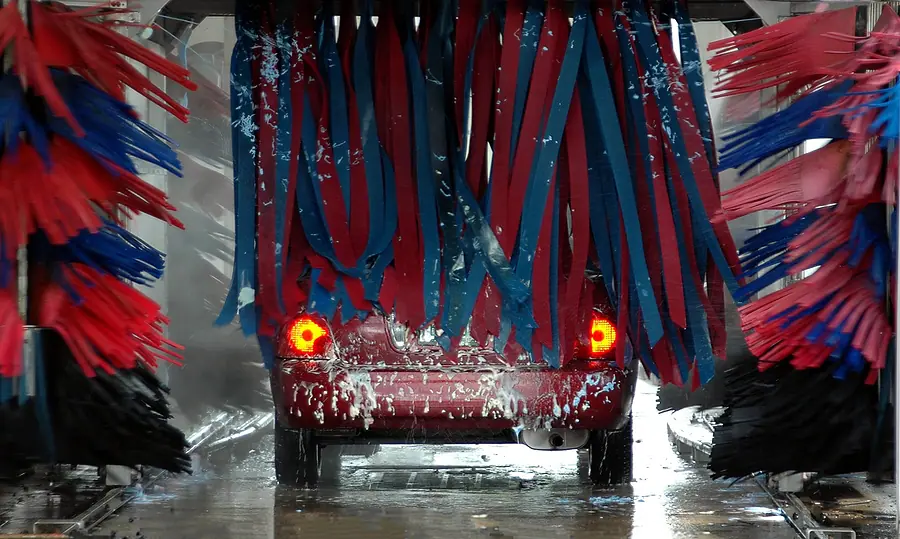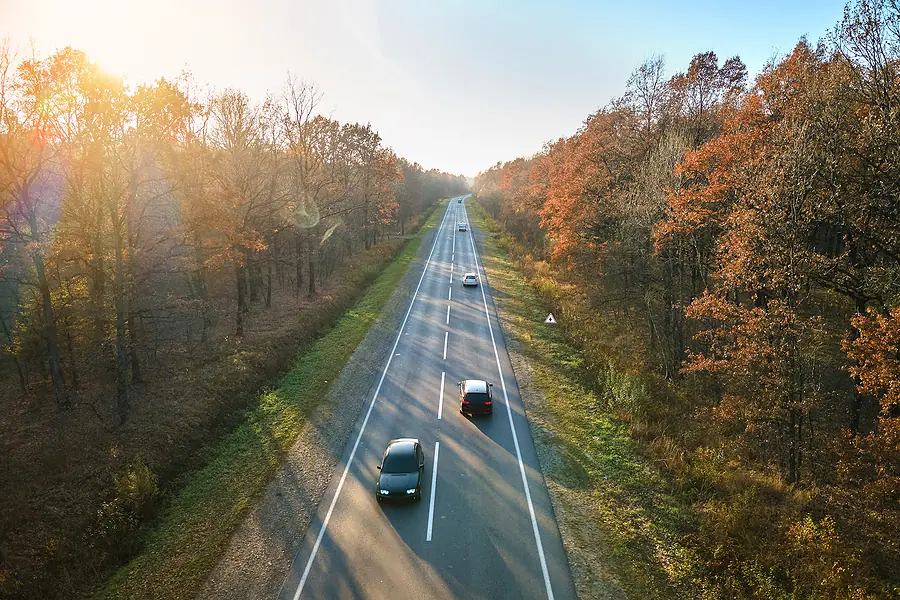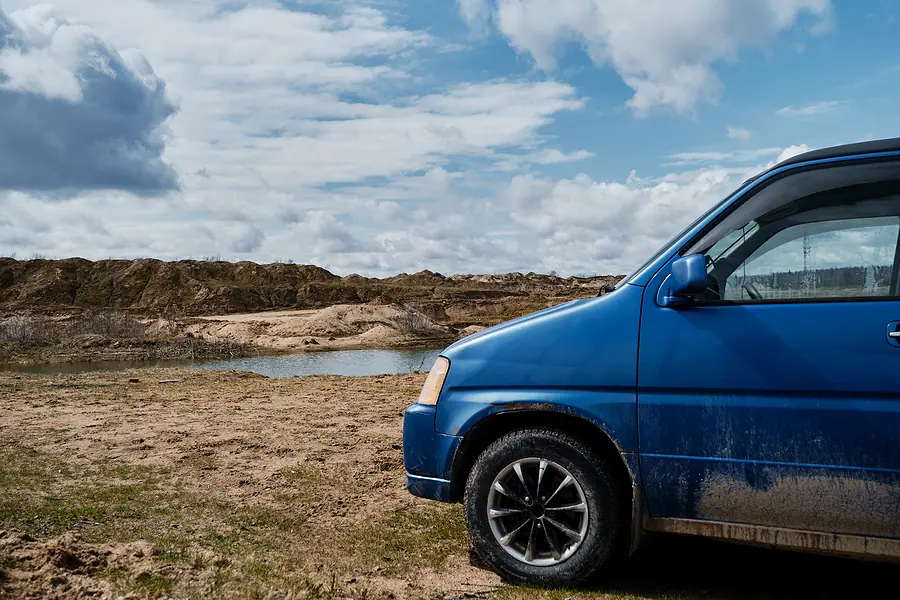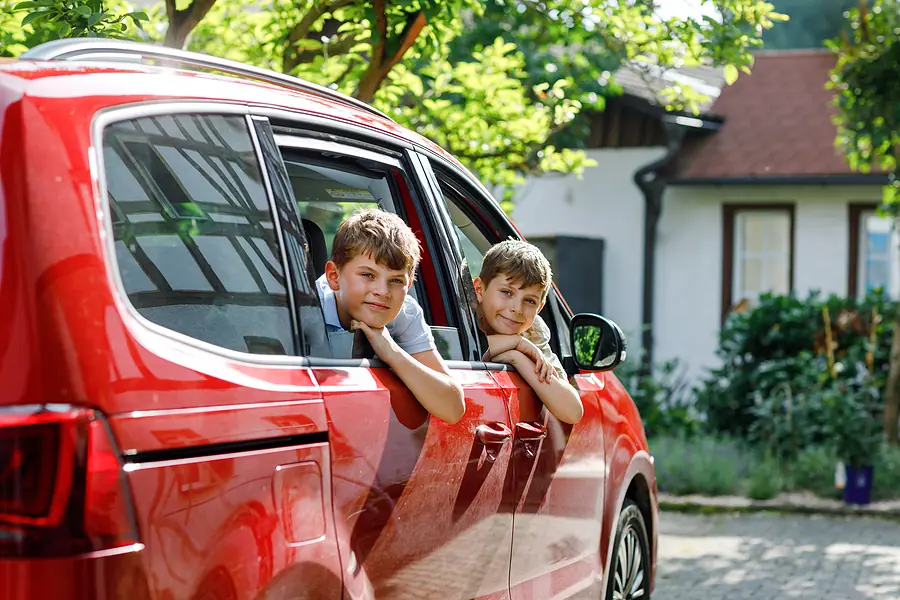How often do you find yourself washing your vehicle? Not everyone has time to keep their vehicle spotless, but there’s an easy and affordable way to get your car washed as often as you want. With 14 locations and our RVA Wash Club membership, you can run your car through the wash at any time for one low monthly price.
Our RVA Wash Club members enjoy a ton of benefits. Here’s why you should sign up for our membership, and keep your car in the best shape you can.
Wash Your Car More Often, Keep it Safe
Ensuring that your vehicle stays clean and maintained is crucial to its longevity and drivability. While it seems like washing your car is just vanity—although there’s nothing wrong with keeping your new and prized investments clean—dirt, dust, debris, rocks, and other garbage can actually affect your safety. Rocks can get caught in the undercarriage and scratch up the metal, or even make their way into the machinery. Branches, pebbles, and dried leaves stuck in your windshield can cause scratches on the glass, which is costly and may impede your ability to see on the road. In fact, your windshield definitely needs periodic cleanings!
Keep the Paint Job Flawless
Sap, pollen, insects, and bird poop are all enemies of car paint. Though today’s car paint is made with the absolute best technology and is hard to rust and ruin, it can still be damaged. Insects, feces, and other sticky matter left on your car by nature are acidic and can eat away at your paint if left for a long period of time. Once the exterior starts to deteriorate, it will continue to become dilapidated if not cared for properly. In the winter, salt can corrode your undercarriage or cause paint to rust. This hurts the resale value if you plan on selling your car in a few years.
Save Time & Money
Our monthly membership is just $24.99 per vehicle, and as long as your car has the tag attached, any family member can bring the car in at any point to get washed. You can drive the car as much as you want through the dirt and slush in the winter, or not be shy to take the car off-roading if you’ve got the option to simply pop by the local car wash and get that mess cleaned up!
Our North Chesterfield and Chester locations offer a 24-hour in-bay automatic wash, so no matter the time of day, you can bring your car in. Find the products you need in our vending machine and vacuums for interior cleaning.
Automatic Car Washes are Greener
Automatic car washes, like Flagstop’s, adhere to state and federal EPA laws, recycling the water and disposing of it in a safe manner. All the cleaners and chemicals used to wash cars are contained and even if you come in frequently, it’ll use less water than you would doing it at home with the hose. Plus, when you wash your car at home, all of the soap and cleaners you use run off into the street and sewers, which is not great for the local ecosystem so accessing a car wash is more environmentally friendly.
You can sign up for the Flagstop Car Wash RVA Wash Club Membership online or in person at any of our locations.
Some cars need a little maintenance in between washes and not everyone is prepared with the necessary supplies and essential items. The interior and exterior require different tools to effectively get it clean, so we are sharing some must have items to keep your car looking its best in between trips to the car wash
For The Interior
A vehicle’s interior can get just as grimy as the exterior, especially if you travel often with pets or children. Depending on the type of material your seats are made of, spilled liquid or food can leave stains so cleaning and protecting it is vital.
- Cleaning solvents and cloth made for fabric or leather are important items to keep on hand. If there is a spill or other mess you’ll want to clean it immediately to avoid damage. Waiting until you can get to a car wash can make it more difficult to remove and lead to staining.
- Visibility is important when it comes to driving, so clean auto glass is essential. Did you know that it is easier to defog or defrost a windshield when it’s clean? When there’s a buildup of residue on auto glass it creates a barrier between your window wash fluid and the glass and makes the wipers work harder. Keeping a quality glass cleaner and a clean cloth handy is key. Always be sure the cloth hasn’t been used with other products that could leave a residue on the glass.
For The Exterior
During everyday driving your car’s exterior accumulates a surprising amount of grime. Anything that is on the roadways will likely affect the exterior and depending on what substance it is, whether it’s salt or other chemicals used on roads, it can result in damaged paint and even rust.
Keeping the exterior clean is important. Even if you don’t notice a lot of dirt it could still be there especially if you’ve recently driven in inclement weather, and it should be removed as soon as possible.
- A bucket and wash rags or sponges that are made for vehicles along with car wash soap are the best DIY items to have on hand for exterior cleaning. Some household liquid soaps have a harsh detergent that’s harmful to the clear coat and paint so using one made specifically for vehicles is key. A hose with a spray nozzle to pre-spray the exterior is a good idea too. Loosening dirt before washing helps to avoid scratches.
- Don’t forget your tires and rims! Depending on what type of wheels you have whether they are polished chrome or painted metal you’ll want to have a quality wheel cleaner/polish to make your tires look their best. Tire cleaner can also help prevent tires from prematurely cracking as they’re exposed to the elements on roadways.
With busy work schedules and limited time on weekends, we know it can be a challenge to find the time to keep your vehicle looking its best. The weather doesn’t always cooperate making it difficult to keep up with washing and waxing your vehicle. Stop by or check us out online—Flagstop Car Wash has convenient wash stations throughout central Virginia and we make it easy to keep your car clean.
You always strive to keep your vehicle looking its best. Whether it’s a brand-new car or an older vehicle, it’s important to prevent rust and maintain a shiny finish. Rust is not only unsightly but can also be hazardous to your vehicle’s stability. Once a vehicle starts to rust it can start impacting the structure of a vehicle depending on where the rust is located.
Routine driving results in vehicles accumulating a surprising amount of dirt and road grime. You may not even notice most of it as it builds up on your vehicle’s surface and underneath the vehicle. A build-up of dirt and grime can impact your car’s functionality and resale value in the long run, so it’s important to be aware of the negative impact of accumulating dirt and rust on your vehicle and prevent it.
Fortunately, there are some simple and cost-effective steps to avoid rust and keep your vehicle from looking dull and grimey.
1. Regular Washing and Waxing
This is undoubtedly the most important thing you can do to keep a vehicle looking shiny and prevent rust. If dirt sits on the paint and isn’t washed off over time it can cause problems. Driving on salt-treated roads or in sand or mud can negatively affect your car’s surface, especially the undercarriage. Dirt and grime affect the clear coat and the paint on your car, making it easier for moisture and eventually rust to penetrate those protective layers. A routine of washing and waxing will remove dirt and add an extra layer of protection to keep the surfaces clean.
2. Touch-up Chips and Deep Scratches
Depending on where you drive, chipped paint is practically unavoidable. They may be hardly noticeable depending on location, but they can result in big problems. Once a vehicle’s paint has a chip in it, it loses its ability to protect the metal underneath that area, resulting in the potential for rust. If you notice a chip or scratch, it’s worth considering getting it repaired to keep your paint and vehicle looking its best and for long-lasting rust prevention.
3. Invest in a Quality Car Cover or Carport
If you have a garage and have space to keep a vehicle in it, that is the ideal option to protect it from the elements. If you don’t have a garage, a car cover or covered carport to park under will also help. The important thing to remember is a vehicle kept outside exposed to the weather is more vulnerable to building up dirt and more vulnerable to the negative effects of rust, which is why routine maintenance and washing is important.
Keeping a vehicle clean inside and out is easier than you might think. Flagstop Car Wash has been serving Virginia residents since 1981. Our convenient locations and top-notch service will be your car’s best friend when it comes to looking shiny and new. Our RVA Wash Club gives our customers unlimited washes for one low monthly fee. Check us out online for details and stop by one of our convenient locations to keep your vehicle looking its best.
Ceramic-coated vehicles are beautiful—and expensive. They’re definitely worth the look, but only if you’re the type of person that will maintain their vehicle. Washing, detailing, and generally caring for your vehicle’s ceramic topcoat is time-consuming. For those that have great attention to detail when it comes to their cars, here are some tips on how to take care of a ceramic coat from automobile experts.
Maintaining Ceramic Coating is a Necessity
One of the best selling points of ceramic top coats is that they are considered “self-cleaning.” Some owners install this coating and think they can just leave their cars alone. Unfortunately, this isn’t the case, and ignoring buildup and grime can ruin a ceramic coat. Self-cleaning means that it is extra shiny and repels dirt. This is a higher-quality coat, meaning it doesn’t fall apart as quickly because of environmental factors. That doesn’t mean it’ll stay in tip-top shape forever without any care.
A ceramic coating on your car adds an additional protective layer through chemical bonding that keeps the paint protected against outdoor elements and certain weather conditions such as UV rays and rain. It also makes it less likely that dirt and grime will adhere to the surface or come in contact with the vehicle’s paint, making it easier to clean.
How to Wash a Ceramic-Coated Vehicle
What makes ceramic coating so special is that the topcoat typically includes several layers of quartz, providing a number of benefits to your vehicle. You might wonder if this really changes the way you wash your car. For some of you, you may have to change up your car washing habits.
The best way to wash a ceramic-coated vehicle is according to the instructions from the manufacturer. If you bought your car with a ceramic top coat, the company will have directions on their website on how to maintain your car. If you had it done at an auto shop, please ask your team for the recommended way to maintain your car.
Dry Your Car Properly
You want your car to dry quickly after any kind of washing or maintenance. While ceramic coats on automobiles do reduce the risk of water spots, you’ll still be prone to them if you don’t take care. Always use a microfiber towel that’s meant for drying cars so that you can absorb water quickly and avoid scratching or damaging your car while it’s wet.
Detailing and Waxing
When it comes to detailing after your wash, that is usually a personal preference. It won’t mess with your ceramic coat. According to experts, there’s no need to wax a ceramic car. In fact, that’s not good for the paint job. However, there are specific sprays and products designed for ceramic-coated cars. After a few years on the road, your ceramic paint job may wear thin, and there are sprays that can help.
The safest way to wash any car is with an automated car wash. Your local car cleaners, like Flagstop Car Wash, use only the top recommended products suitable for cars. Visit our website for available deals and to find a full list of our locations, including 11 premium express car wash locations and two 24-hour automatic self service wash locations around RVA. We look forward to seeing you soon!
Giving your vehicle a good scrub down is never a bad idea. The amount of dirt and grime that can build up as you’re driving around can be unsightly. Everything on the road surfaces can quickly accumulate on your car. That funk on your vehicle can also have an affect on your health.
Keeping your vehicle clean inside and out will help lessen your exposure to those germs. Here’s the scoop.
1) Keeping your vehicle clean reduces exposure to allergens.
Pollen, mold, and other irritants can negatively affect you anywhere. When pollen season is here and it accumulates on your vehicle, you and your passengers are exposed to those irritants. Each time you open or close your doors, roll down the windows or touch the door handles the pollen will start blowing around. Mold is a common irritant that can remain unseen until it starts affecting your health. Moisture and lack of air circulation create an ideal environment for mold growth. Spilled drinks or a forgotten rolled down window are all it takes to give mold a chance to grow. The good news is it’s easy to avoid these irritants just by keeping your car clean and making sure to wipe up any moisture in your vehicle.
2) A clean vehicle keeps germs away and bacteria at bay.
Think of all the dirt on the roads and parking lots. Whenever you drive your vehicle it’s exposed to germs and bacteria that may surprise you. You and your passengers can also unknowingly track it into your car as you get in and out. The exterior of your vehicle is exposed to environmental elements and everything outdoors that it comes into contact with—those germs can become a health risk. Making sure to clean it often, inside and out, paying special attention to carpets and floor mats will ensure any bacteria that is present doesn’t have a chance to grow.
3) A clean vehicle is less inviting to pests.
Wherever there are hiding places and food crumbs there’s a risk of pests. When pest infestations occur there’s a chance of exposure to their feces. Many pests can spread disease through their droppings. If your vehicle has any messes left behind from you or your passengers pests such as rodents, cockroaches and ants can find their way in to eat the food crumbs tempting them, and can even nest in your car. Practicing good cleaning habits especially if kids and pets are amongst your regular passengers will greatly reduce your exposure to pests and the germs they carry.
It’s amazing how quickly dirt and grime accumulates. Often you might not even notice it until it’s pretty bad. Busy work schedules and back to school schedules can make keeping up with vehicle hygiene a low priority. Lives get busy and keeping your car clean takes time. Flagstop Car Wash makes it easy and saves you lots of time. Stop on by and check out our RVA Wash Club! Unlimited washes at any of our 13 convenient locations make keeping your vehicle clean a breeze.
Keeping your vehicle clean inside and out will help keep it looking new over the years. Having a regular cleaning schedule makes a difference and makes it easier to maintain each time you clean.
1 ) Before you start it’s important to gather the essential supplies you’ll need.
- Clean microfiber cloths and cleaning solvents made for the materials you will be cleaning are vital. Using the correct products and a clean cloth that hasn’t been used for any other purpose will ensure you aren’t doing more harm than good. The wrong solvents can damage or stain interior leather and fabric.
- Depending on the material of your seats you may need a specific cleaner and leather conditioner. Make sure you’re using the right products made for those interior areas and apply as instructed on the label.
2) Park the vehicle in the shade if possible and have access to a vacuum.
- Vacuuming the vehicle before you begin the detailed cleaning process will help it go a lot smoother. Removing that loose dust and debris before you start wiping it down helps to prevent working any dirt into the interior surfaces and carpet as you move around in there.
- When you’re able to park in the shade it will help to get the most out of the cleaning products, especially in the warmer weather. The direct sun will often dry or “bake” the product on before you get a chance to wipe it off. This can result in a streaked or smudged look.
3) Clean small sections working your way across and down.
- By working in sections you’ll avoid losing track of where you already cleaned so you can be sure you’re not working harder than necessary and not missing a spot. This is especially important when cleaning the interior of the auto glass.
- Clean the interior areas first that are up higher. For example, starting with your windshield interior and then working your way down to your dashboard will avoid any overspray of windshield products getting on the dashboard area that you just cleaned.
4) Follow manufacturer guidelines and consider the product quality.
- Not all auto cleaning products are created equal. Some use better quality ingredients than others, especially some leather cleaning and conditioning products. Using a high-quality item will pay off in the long run.
- Check the package directions and owner’s manual and make sure the product is the right one for your vehicle. Some vehicle manufacturers have their own cleaning recommendations depending on the type of leather or other material that is used for the interior surfaces.
5) Be thorough and take your time.
- Cleaning your vehicle’s entire interior can seem like a daunting task, but if you have the right supplies and can set aside a couple hours to do it right you’ll be able to then enjoy a nice clean interior as you go about your day. Try to do it during a time when you won’t feel rushed.
- Vehicles have a lot of “nooks and crannies” so paying attention to details will help to ensure you don’t miss a spot. After you’re finished move the seats and take a peek under to be sure you cleaned all the debris out from there. Kids, pets and just daily travel can result in a surprising amount of mess in vehicles.
At Flagstop Car Wash we make keeping your vehicle clean inside and out a breeze. Our car washes are convenient and you can use them as often as you want when you join our RVA Wash Club —one low monthly price gives you unlimited access to any of our automatic car wash locations. Our free-to-use carpet floor mat cleaners, vacuums and other cleaning services are available to make the process of keeping your vehicle clean a great experience. Stop by and see us today!
People will always argue the merits of automatic car washes vs. DIY when it comes to washing cars. There are plenty of benefits to both but also many myths surrounding automatic car wash techniques. Here are some common misconceptions about automatic car washes vs. home DIY car washes.
Myth: Automatic Car Washes Waste Water
Actually, the opposite is true. Repeat studies have shown that automatic car washes are extremely environmentally friendly. Modern car washes are built with a water recycling system, so it catches any water used during the wash, filters it, and uses it again! According to state regulations and protections, car washes are also required by law to dispose of any water and chemicals. So you can rest assured that no chemicals are making their way into the ecosystem after an automatic wash.
Myth: Washing Your Car at Home Saves Water
Washing your car at home seems like a noble effort but is actually not great for the environment around you. It uses a lot of water. You’ll also have to use soap and chemicals to clean your car, which wash away into the storm drains and grassy areas near your home, effectively making their way back into the environment.
Myth: Automatic Car Washes Damage Paint
Another rumor going around is that automatic car washes can damage your car’s paint. Anyone who values their car understands the importance of the paint job on their vehicle. It affects the resale value and the overall look. Though modern paint is made to be resilient, certain things will damage your car’s paint including pollen, sap, and chemicals from soaps can oxidize or stick and cause the car’s paint to peel. The soaps and all materials used in automatic car washes have been studied and approved for sale by various automobile safety standard groups and professionals in the car wash industry.
Myth: Car Washes Can Scratch Your Car
We’re not sure how this rumor got spread, considering it is far more likely, according to statistics, that your car’s paint is at risk of getting scratched at home. If you are washing your car yourself, please avoid using plastic utensils, like sponges or long-bristled cleaning tools. Don’t ever use a scraper that you’ve bought in a store yourself. These items are likely to cause damage to your car’s paint. Some sponges and materials are simply too rough and not made for cleaning vehicle exteriors. In an automatic car wash, however, all the tools and brushes that are used are made specifically for cars and maintained to ensure they don’t cause damage.
Myth: Car Washes Damage Rims
Nope, nope, nope! Your rims and tires need to be scrubbed and blasted by water to maintain their functionality. Whether you’ve got regular rims or fancy expensive ones, the automatic car wash will have enough pressure to get off the dirt, grime, mud, and rocks to keep you driving smoothly.
If you’re looking for a great quality automatic car wash, come to any of Flagstop’s 13 convenient locations around the Richmond area. We even have the RVA Wash Club for those of you who prefer frequent washes and want a quick way to wash and pay!
Every season, you must watch out for something weather-related if you’re a vehicle owner. Summer and fall should be relatively easy going seasons with little to worry about. However, nature is always something to worry about, and autumn brings a few hazards that all drivers should be aware of.
Your car’s exterior is critical. While technology has made high-quality paint that doesn’t scratch or rust easily, there are still plenty of ways to damage it. Older models of cars are more prone to paint damage simply because of age. Newer luxury models have better quality paint, but that also means you have to take extra care of it so that your vehicle stays looking fresh and doesn’t decrease in resale value!
1. Falling Leaves
When the leaves fall in autumn, it’s everybody’s favorite moment until you have to clean them off your car. While leaves don’t seem like a big deal, they can do a lot of damage to a vehicle. They end up in your windshield, under your wipers, and can potentially end up scratching the glass. Always make sure to clean the leaves out before you drive anywhere. You should keep a towel to help wipe off dust in your trunk – it’ll come in handy in all the seasons.
Leaves can also clog up your sunroof or convertible roof, which is expensive to fix. Other than messing with the exterior, extensive amounts of leaves during the fall mean that some will almost certainly make their way inside your car’s mechanics and possibly damage something vital.
2. Tree Sap
Sap from trees is sticky and acidic, so beware of parking your car under trees in the autumn. You may not even notice a tree producing sap, but that is a year-long issue for vehicle owners. Tree sap is a nuisance because its sticky consistency takes time to scrub off. You must also use suitable materials to scrub your car, lest you risk scratching the paint. If you opt not to wash it off immediately and let tree sap sit on your vehicle, you’ll end up with spots. Tree sap is acidic and can corrode paint.
3. Pollen
Like sap, pollen is stickier than it looks and can wear away at your vehicle’s paint if left untreated. After a professional wash, a wax treatment done at the beginning of every season can help prevent corrosion, rust, and discoloration from weather-related substances like pollen. While it seems like pollen is mostly a danger in the spring, it can affect your car year-round.
4. Bird Excrement
Bird excrement is another sticky and acidic substance that can damage your vehicle’s exterior by oxidizing the paint or wearing away at it. It’s essential to wash your car if you accidentally park somewhere where a flock of birds happens to be nesting for the night.
5. Rocks and Dirt
With the weather changing, the winds in the autumn are often higher and colder. Be careful while driving on highways and rocky roads, as high winds can kick up debris that can scratch your paint.
Don’t let leaves, dirt, rocks, or sap ruin your car’s paint! Wash it regularly to avoid damage and upkeep your resale value. Check out any of the 12 Flagstop Car Wash locations near Richmond, VA. Our car washes come with a variety of features and choices. For those who wash their car often, there’s the RVA Wash Club, which allows you to get your vehicle washed anytime with no hassle. Keep your car clean and stay in excellent shape over the years.
Maintaining your vehicle is an integral part of being a car owner. Whether your vehicle is your prized possession and you want to keep it looking good or would like to maintain the resale value – the car’s exterior has to appear new. This means you must take good care of your car’s paint job.
While the car’s exterior paint is made to last through brutal weather and road conditions, it still has weaknesses. The acidity and PH levels in things like bird excrement, sap, dust, and dirt, can erode your car’s paint. Here are the top five hazards that can damage your vehicle’s paint.
1. The Sun
While car paint lasts just fine in most situations, individuals that live in scorching and sunny places should take care. Every vehicle owner should avoid parking their car in direct, bright sunlight for extended periods. If you’re unable to find shade and live somewhere with bright sunlight or if you’re unable to park in a garage, you may want to get a cover for your car
Sunlight oxidizes paint. After repeated exposure to an overabundance of the sun, you may find your car’s exterior to start cracking and peeling.
2. Tree Sap and Pollen
Most cars across the Northeast United States have to deal with tree sap and pollen covering their car every spring and summer season. This doesn’t seem like a big deal, but these substances are quite sticky and attract even more dirt, dust, and debris. In addition, the chemical compounds contained in tree sap may eventually start to erode the paint. The best way to avoid that is by taking your car to get washed regularly. Only the proper soap and sponges can break up tough, sticky sap.
3. Bugs and Bird Droppings
You may not realize it, but bugs are constantly splattering on your vehicle as you drive it at high speeds. You may not even notice small bugs splattered on the bumper and hiding on the windshield, but their little carcasses contain chemical compounds that help to eat away at car paint. Of course, this only happens if you leave your car unwashed and allow the insects or bird droppings to stay on the paint for a long time. Bird droppings are sticky and contain chemicals that make your car’s paint oxidize, crack, and peel if not taken care of.
4. Ice and Cold Weather
Ice is something that car owners worry about every winter. It’s not enough to dig your car out of snow. It’s usually iced over and needs to be heated before it runs. At that moment, your paint and windshield are likely covered in ice. Do not scrape the ice off your car! Scraping ice with improper tools can cause scratches to appear. Cold weather also brings storms and hail. Rocks and ice flying at your vehicle can, of course, be a hazard to the paint.
5. Dish Soap and Other Cleaners
Always use water and car-specific soaps if you have to wash your car yourself or keep it clean between washes. Dish soap, though easy to find and cheap, can damage the coat of paint. It’s not noticeable at first, but the compounds in dish soap are corrosive to the transparent protective coats of paint on the outside of your vehicle. Repeated use will eventually visibly damage the car’s paint.
Some of these hazards are avoidable. Of course, you cannot do much about ice, hail, and rocks chipping away at your car. You also can’t control pollen, or bug splatters. However, most hazards that corrode the car’s paint can be avoided with regular washes. Visit any of the 12 Flagstop Car Wash locations in and around the Richmond area to keep your car’s paint looking new.
Nothing sounds better than a road trip! The thought of wide open roads, wind in your face, and the excitement of reaching a new destination is so promising that many people skip the car safety checklist. However, if your car breaks down or malfunctions on the road – it’s an absolute joy kill. To make it easy, we’ve listed the most important things to examine your vehicle for before you set out on your trip.
1. Check Your Car’s Battery
Most modern cars will tell you if your battery is running out of juice, but sometimes the unexpected happens, which is why you should purchase a spare battery and keep it safely in your trunk. You should open up the hood and ensure the battery’s connection is corrosion-free, and everything is connected tightly. If you don’t know how to do that and your car is more than two years old, have a professional give your car a once-over before you travel thousands of miles.
2. Top off Fluids and Replace Filters
Check your engine oil, power steering, transmission fluid, and windshield washer fluid before driving off. If any of these runs out or malfunctions, you’ll likely be stuck on the road waiting for roadside assistance for a while. These are also cheap and easy to replace, so it’s an easy maintenance procedure you can do to ensure your own safety.
3. Try Your Lights, Electrical System, and Windshield Wipers
Turn it all on and make sure everything is working smoothly. Your interior and exterior lights should go on and off. Replace any bulbs if necessary. Your electrical system that connects your GPS and phone and keeps the car running should also get a quick diagnostic. Fix any system issues before a road trip. Keep your windshield wipers and fluid maintained, and ensure it’s working correctly. Otherwise, you may be on a highway when you realize your wipers are leaving streaks and impairing your visibility. Most shops recommend you replace your wipers every six months.
4. Check Your Tires and Inspect the Brakes
It also helps if you have a large automobile and can stash an extra tire, but if you can’t, inspect it to make sure everything is in order. Most gas stations have a pump where you can fill your tires up with air. Any squealing noise from your brakes when you press them may be an indication that there’s an issue. You should always have your brakes and mechanics inspected before driving a long distance.
5. Give Your Car a Good Wash
Spring for the extra if you can before you go on a trip. It may seem like a moot point because your car is likely to get dirty, but a professional, high-powered wash can keep your car functioning properly. The windshield can always be cleaned for visibility. The jets of water dislodge mud, dirt, and rocks from your undercarriage (which can prevent a mechanical error), and your tires will be clean and rolling smoothly.
Before going on your road trip, take your car to any of our convenient Flagstop Car Wash locations. We’re all over the Richmond area, so no matter where you’re going, your automobile can get a spruce-up before you go. Check out our RVA Wash Club if you’re planning on driving through those muddy summer roads often! If you have any car-wash-related questions, our team would be happy to hear from you! Feel free to call us anytime at 804-782-9274.
 RVA Wash Club Signup
RVA Wash Club Signup